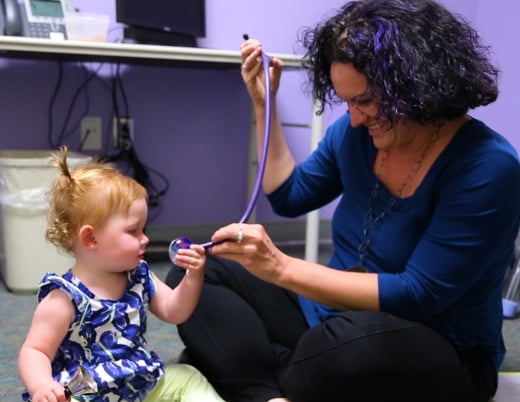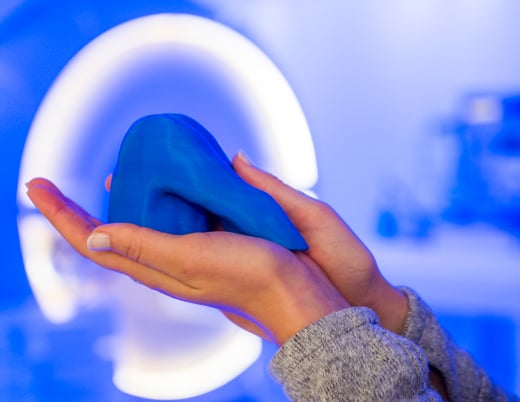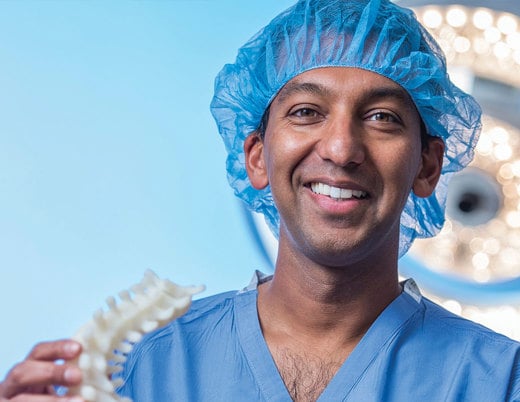What can studying identical twins reveal about the potential role of epigenetics in adolescent idiopathic scoliosis?
Surgery is the bread and butter of pediatric orthopedics, and physicians tend to focus on solutions rather than causes. That makes sense when you consider just how difficult it is to nail down the genetic and molecular basis of musculoskeletal diseases. But Nancy Hadley-Miller, MD, has spent her career trying to do just that. She has long employed a research-based approach to adolescent idiopathic scoliosis (AIS), meticulously hunting down the genes that both cause it and make it worse. Her latest study focusing on DNA methylation in identical twins with AIS has identified areas of the genome that could hold key information.
Like finding a needle in a haystack
AIS is one of the most common forms of scoliosis, causing spinal deformity in 1 to 3% of adolescents. Dr. Hadley-Miller says that while the disease is not fatal, its impacts — financial, social, physical and emotional — are devastating for kids and families.
And though it’s clear there’s a strong genetic component, researchers haven’t pinned down the combination of genes that causes AIS and increases spinal curve severity. Dr. Hadley-Miller explains that with diseases like diabetes, researchers have the benefit of narrowing their search to just one organ, the pancreas. But with orthopedic conditions such as AIS, it’s a bit like finding a needle in a haystack.
“Bones are everywhere. Cartilage is everywhere. That’s what makes it overwhelming to figure out what the problem is,” she says. “I've been studying this for more than 30 years and sometimes I feel like we're further away than we were when I started.”
With her latest study though, Dr. Hadley-Miller shrunk the haystack and inched closer to the needle. Working alongside Patrick Carry, PhD, Dr. Hadley-Miller recently published new research utilizing the largest known set of monozygotic (identical) twins with AIS in the world to better understand whether and how epigenetic, or environmental, factors play a role in disease onset.
Epigenetic research methods
Dr. Carry says the use of epigenetic research methods in studying musculoskeletal diseases is novel and presents new opportunities for critical breakthroughs as they represent an interesting bridge between nature and nurture. Epigenetics are a set of mechanisms that have numerous biological functions, including modifying gene expression. These mechanisms are set in motion by external factors, including hormone exposure, smoking, pollution and other environmental exposures.
“We know there isn't one gene that causes scoliosis,” Dr. Carry says. “The epigenetic work is really exciting because epigenetics provides almost like a record of environmental exposures over the lifetime of an individual. This information can help us to understand the role of external factors in the onset of complex musculoskeletal diseases.”
Comparing DNA methylation
DNA methylation is considered the most easily measurable epigenetic mechanism and occurs when a methyl group is added to the cytosine nucleotide in a DNA sequence. This can alter the way the body interprets that gene. For this study, Dr. Hadley-Miller and Carry examined DNA methylation in blood samples from eight sets of twins with AIS.
Because identical twins are near perfect genetic matches, utilizing this population for study allowed Drs. Hadley-Miller and Carry to compare differences in each twin’s spinal curvature and to trace those differences to specific areas of the genome by correlating differences in curve severity to differences in DNA methylation.
This comparison of twins with AIS uncovered 58 sites where DNA methylation differed between sets of twins and four sites that are specifically related to curve severity. To narrow the pool of 58 possibilities even further, Dr. Hadley Miller collaborated with a researcher at Sweden’s Lund University to identify which of these genome sites, measured in blood, were similar in bones. That brought the total number of suspected regions down to just 21.
Will we ever find the genomic cause of AIS?
Though the work is not done and Dr. Hadley Miller says she doesn’t expect to find her “holy grail,” — the specific genomic cause of AIS — in her lifetime, she says this work has brought us closer than ever before.
“I think it's very important,” she says. “Is this going to lead to some therapeutic targets? I don’t know. But it certainly gives us a hint as to where we may go next.”
Featured Researchers

Nancy Hadley-Miller, MD
Orthopedic Surgery
Children’s Hospital Colorado
Professor
Orthopedics
University of Colorado School of Medicine





 720-777-0123
720-777-0123










